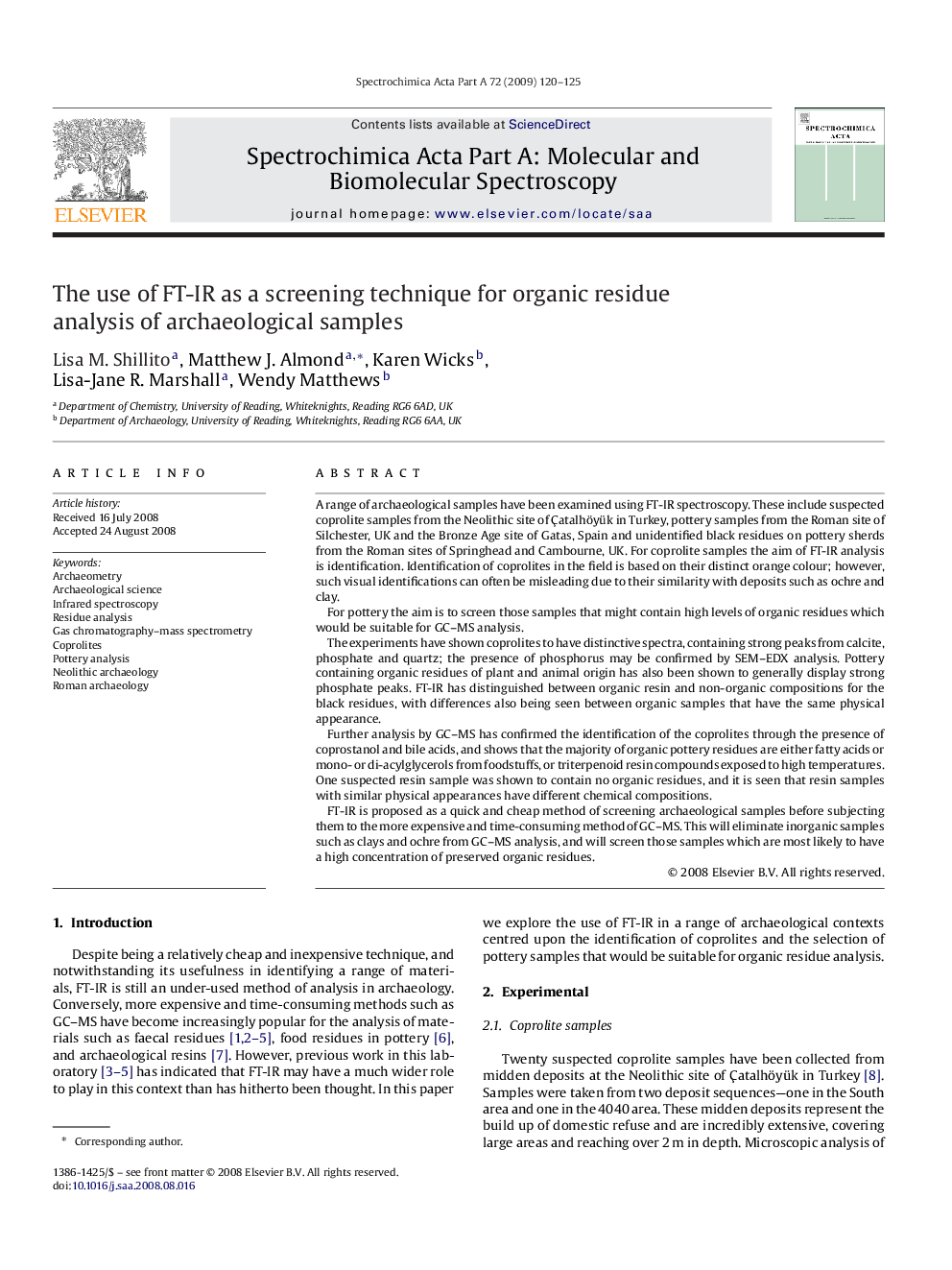| Article ID | Journal | Published Year | Pages | File Type |
|---|---|---|---|---|
| 1237264 | Spectrochimica Acta Part A: Molecular and Biomolecular Spectroscopy | 2009 | 6 Pages |
A range of archaeological samples have been examined using FT-IR spectroscopy. These include suspected coprolite samples from the Neolithic site of Çatalhöyük in Turkey, pottery samples from the Roman site of Silchester, UK and the Bronze Age site of Gatas, Spain and unidentified black residues on pottery sherds from the Roman sites of Springhead and Cambourne, UK. For coprolite samples the aim of FT-IR analysis is identification. Identification of coprolites in the field is based on their distinct orange colour; however, such visual identifications can often be misleading due to their similarity with deposits such as ochre and clay.For pottery the aim is to screen those samples that might contain high levels of organic residues which would be suitable for GC–MS analysis.The experiments have shown coprolites to have distinctive spectra, containing strong peaks from calcite, phosphate and quartz; the presence of phosphorus may be confirmed by SEM–EDX analysis. Pottery containing organic residues of plant and animal origin has also been shown to generally display strong phosphate peaks. FT-IR has distinguished between organic resin and non-organic compositions for the black residues, with differences also being seen between organic samples that have the same physical appearance.Further analysis by GC–MS has confirmed the identification of the coprolites through the presence of coprostanol and bile acids, and shows that the majority of organic pottery residues are either fatty acids or mono- or di-acylglycerols from foodstuffs, or triterpenoid resin compounds exposed to high temperatures. One suspected resin sample was shown to contain no organic residues, and it is seen that resin samples with similar physical appearances have different chemical compositions.FT-IR is proposed as a quick and cheap method of screening archaeological samples before subjecting them to the more expensive and time-consuming method of GC–MS. This will eliminate inorganic samples such as clays and ochre from GC–MS analysis, and will screen those samples which are most likely to have a high concentration of preserved organic residues.
